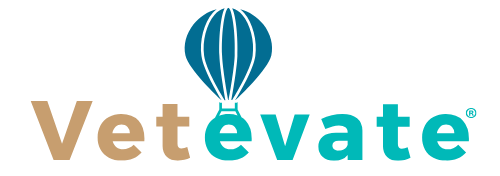Veterinary job boards are purpose-built platforms designed to connect employers in the veterinary industry with job seekers who are trained and experienced in animal health care. Their primary goal is to streamline the job search and hiring process within a highly specialized field. These platforms operate with a singular focus: supporting veterinary professionals, which includes veterinarians, veterinary technicians, assistants, practice managers, and other allied roles. Unlike general job boards, veterinary-specific sites offer a curated experience that filters out irrelevant postings and targets a professional audience deeply engaged in the veterinary space.
The structure of these job boards typically revolves around a searchable database of job listings, each containing detailed descriptions of open positions. These listings often include information such as the type of practice, species served, responsibilities, location, compensation details, and expectations for education or licensure. On the back end, the platform provides tools that allow employers to post jobs, manage applications, and track responses. For job seekers, the interface offers search functionality based on region, specialty, experience level, and job type, making it easier to navigate and pinpoint the roles most aligned with their career goals.
These boards are carefully designed to provide an intuitive user experience. Most are web-based, but many also feature mobile-optimized versions or dedicated apps to accommodate professionals who may be job searching on the go. At their core, veterinary job boards aim to create a centralized ecosystem that removes the friction of traditional job hunting and makes finding or filling a veterinary position more efficient, accurate, and accessible to everyone involved.
How Employers Use Veterinary Job Boards to Hire
Employers are central users of veterinary job boards, and these platforms are built to meet the demands of hiring in a time-sensitive, credential-heavy profession. When a veterinary clinic, hospital, shelter, or corporate group has a position to fill, their first step is typically to register or log in to the job board and access the employer dashboard. This interface allows them to create a job posting that details the role, including job title, location, salary range, hours, type of employment, required certifications, and desired years of experience. Some platforms also encourage or require employers to provide a description of their clinic’s culture and mission, which helps attract candidates who are aligned with the work environment.
After the posting is created, it is reviewed—sometimes automatically and sometimes manually by the platform’s team—and published to the site. The job becomes searchable by users and is also often distributed via email alerts or featured listings. Some veterinary job boards offer premium placement options for increased visibility, such as featuring a job at the top of search results or highlighting it in bold text or different colors. These enhancements are typically used for positions that are difficult to fill or when an employer is looking to attract candidates quickly.
Employers can monitor the performance of their job posts using built-in analytics. These may include the number of views, click-through rates, and applications submitted. Most platforms also allow employers to sort and filter applicants, send follow-up messages, and schedule interviews directly through the site. The goal is to allow veterinary employers to manage the hiring process efficiently from start to finish without needing to juggle multiple communication tools. For time-strapped practice managers and veterinarians, these systems are invaluable, offering a one-stop solution for sourcing, screening, and hiring top talent.
How Job Seekers Interact With Veterinary Job Boards
Veterinary job seekers, ranging from recent graduates to experienced clinicians and technicians, use these platforms to identify opportunities that suit their career aspirations. The process typically begins with creating a profile on the job board. This profile includes details such as education history, licensure status, work experience, and professional interests. Some platforms also allow job seekers to upload a resume, cover letter, and portfolio items such as case studies or references, creating a complete digital representation of their qualifications.
Once the profile is complete, the job seeker can begin browsing available jobs. Search tools are a central part of the user experience and allow for filtering based on job type, species focus, location, work schedule, and other personal preferences. Most boards provide both standard and advanced search functionality, enabling users to quickly drill down to listings that match their needs. When a relevant job is found, the job seeker can typically apply directly through the site by submitting their profile, uploading additional documents, or answering screening questions provided by the employer.
In addition to applying for jobs, veterinary professionals can set up job alerts that notify them when new listings matching their criteria are posted. This feature ensures they never miss an opportunity, even if they’re not checking the site daily. Some job boards also offer features like “saved jobs” or “applied history” so that users can track their activity and manage their job search over time. For individuals who are exploring their options but not actively applying, many platforms also offer anonymous browsing or “passive job seeker” modes, allowing them to see opportunities without signaling intent to apply.
Many veterinary job boards go beyond job listings by offering support tools such as salary data, industry news, interview preparation resources, and articles on career progression. These features help job seekers not only find jobs but also plan their careers in more informed and strategic ways. The platforms aim to serve as comprehensive career hubs for veterinary professionals at all stages.
Behind the Scenes: Operations and Evolution of Veterinary Job Boards
The ongoing success of a veterinary job board depends on its ability to evolve with the needs of both job seekers and employers. These platforms are typically run by specialized teams who handle operations, technology development, user support, and marketing. Their daily responsibilities include reviewing job posts, maintaining the platform’s technical infrastructure, providing customer service, and ensuring a consistent user experience. Many also invest in outreach to veterinary schools, professional associations, and trade events to build trust and visibility within the community.
Technology plays a significant role in the operation of a modern job board. Developers and engineers work behind the scenes to ensure that the search algorithms are effective, the user interface is smooth, and the platform remains secure. Many job boards use artificial intelligence or machine learning to improve job matching and personalize job recommendations. They may also use analytics to monitor which types of postings perform best or which features lead to the highest user satisfaction, making regular adjustments to improve performance and outcomes.
Marketing teams within job board companies focus on growing the user base and ensuring that the platform stays top of mind for both job seekers and employers. This can include email campaigns, social media marketing, sponsored content, and partnerships with veterinary organizations. Effective outreach helps ensure a continuous influx of both job opportunities and candidates, which keeps the platform dynamic and valuable to its users.
As the veterinary field continues to change—with shifts in workforce demands, new practice models, and the rise of telehealth—veterinary job boards must continue to adapt. The best platforms are those that stay ahead of these trends, offering new features that respond to emerging needs while staying true to their core mission: connecting the right people with the right veterinary opportunities. Whether it’s through enhanced customization, more transparent employer profiles, or new virtual hiring tools, these job boards evolve to remain essential infrastructure in the veterinary hiring landscape.




